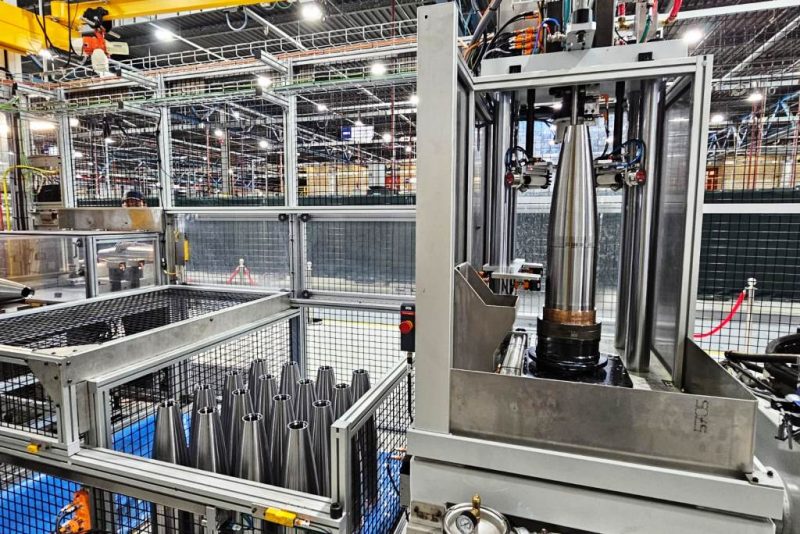Inauguration of a new 155 mm artillery-shell production unit at KNDS Belgium: A major strengthening of Belgian and European industrial capacity
Petit-Roeulx-Lez-Nivelles, Tuesday, November 4 2025 – The Belgian Minister of Defence, Mr. Théo Francken, today inaugurated a new Large-Calibre Machining and Driving-Band assembly unit (UCGC) at the defence company KNDS Belgium. The facility includes an automated production line for 155 mm artillery shells, intended to strengthen the group’s industrial capacity — which already included two production lines — amid strong demand for munitions.
“One production line, two benefits: autonomy and jobs. By manufacturing our ammunitions ourselves we keep the economic value added here and gain strategic strength. In 2026, with our CAESAR howitzers ready for use, we will be firing Belgian munitions,” Minister Francken said during the ceremony.
Mr. Jean-Michel Girard, Director of KNDS Belgium, stressed:
“In 2026, nearly six months of production will be dedicated to shells for the Belgian Defence. This is a great source of pride for our company, which has been serving the Land Forces for almost 90 years. We maintain a constructive and ongoing dialogue with Defence on technical, conceptual and operational levels. This investment generates workload while supporting our innovation dynamic and skills development. Many projects are still to come.”
He also recalled “the importance for Belgium of having a major national player in the field of medium- and large-calibre munitions. With 350 employees, KNDS Belgium is an essential link in Belgium’s defence industrial and technological base, and a globally recognised partner.”
Finally, Major-General Filip Borremans, National Director of Armaments, confirmed: “The start-up of this automated 155 mm shell production line in Belgium marks a crucial step in strengthening our strategic autonomy, both nationally and at the European level. This robust and scalable production capability contributes not only to our operational readiness and our interoperability within NATO, but also to the resilience of the European defence industry.”
Photo courtesy KNDS



